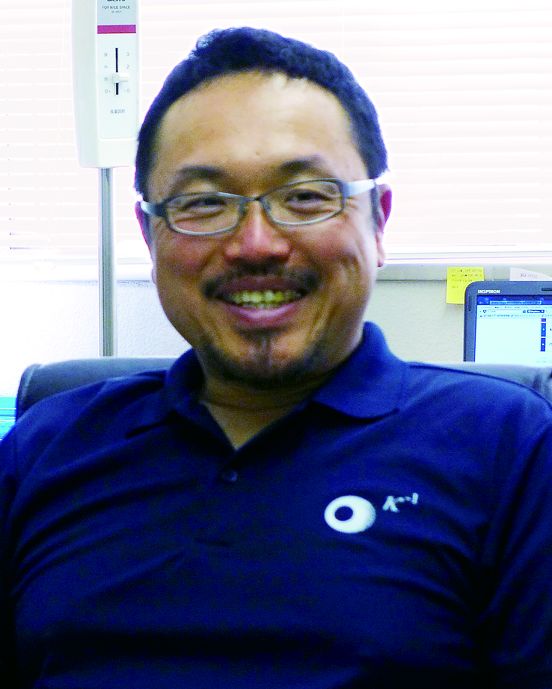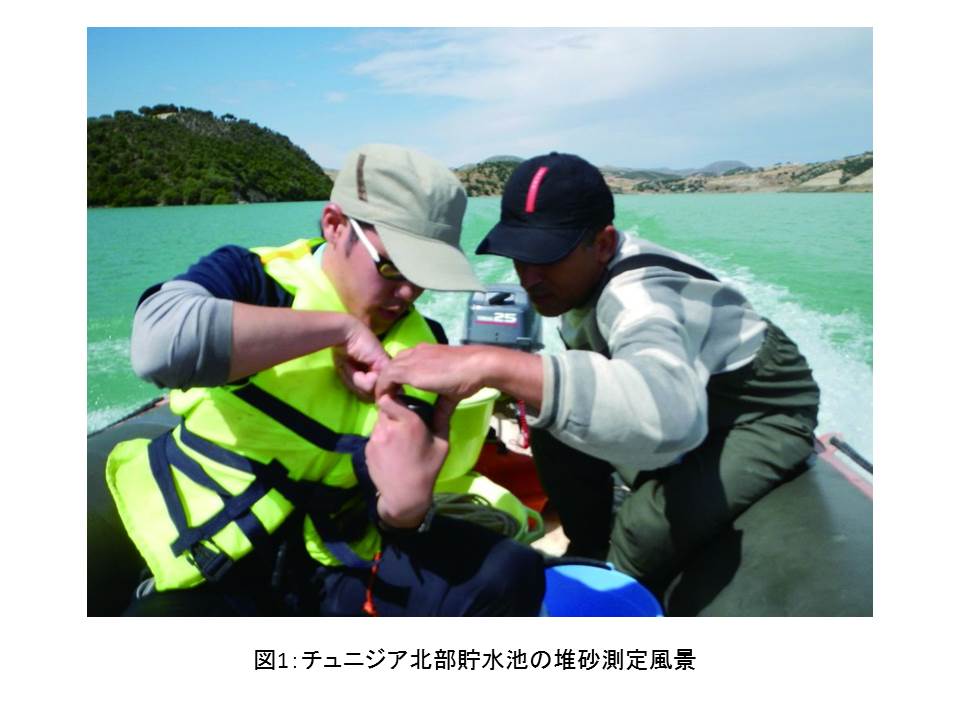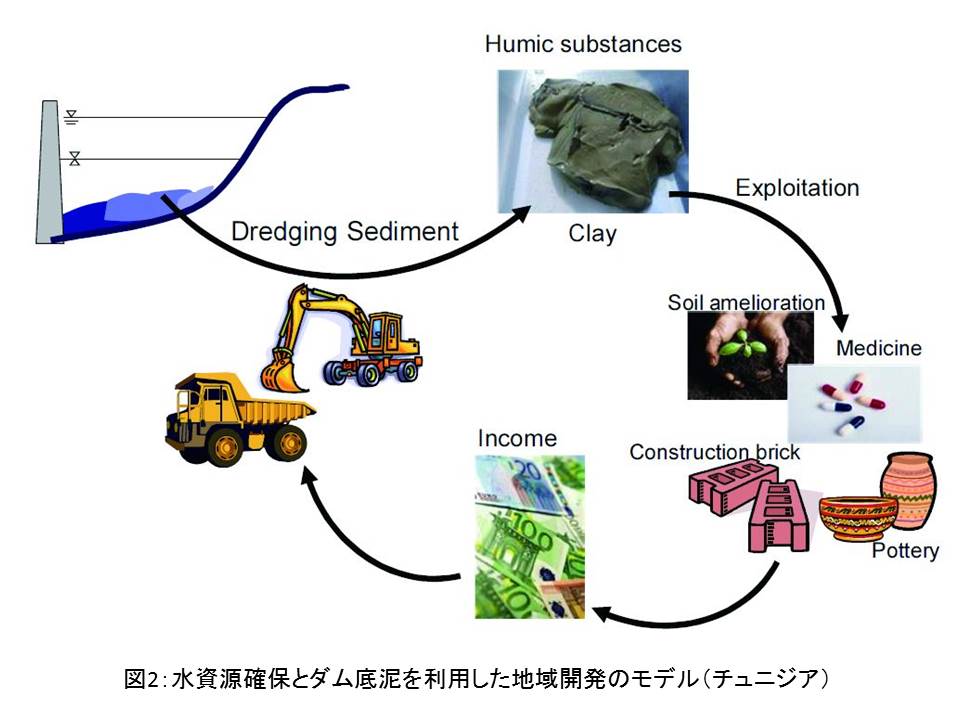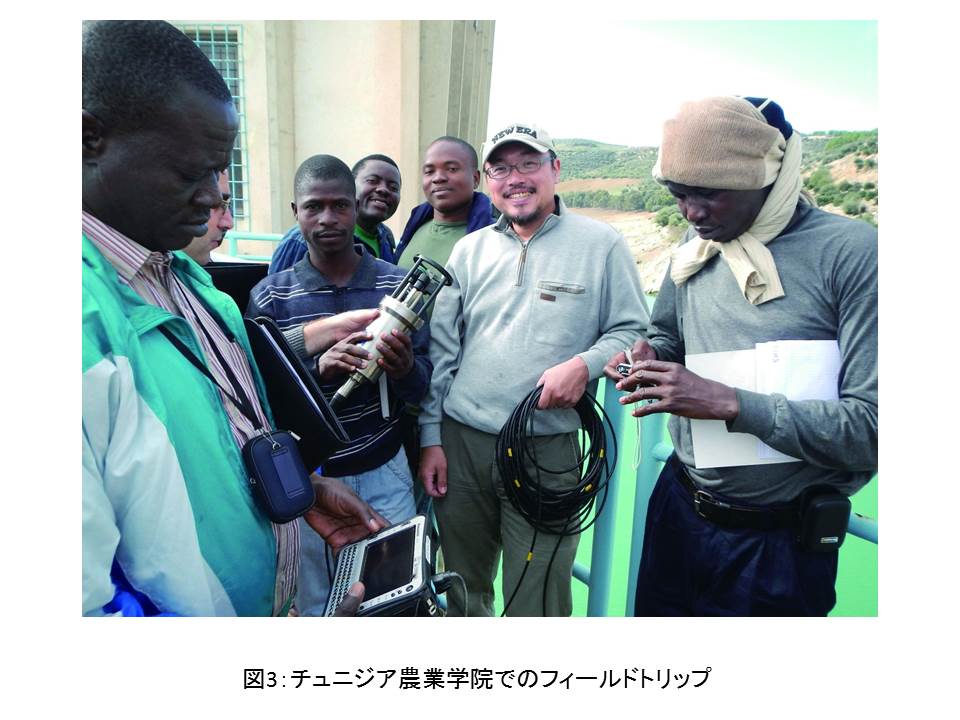キーワード:水資源、生物資源、乾燥地、生態系
http://developconserve.wordpress.com/
 日本は水資源が豊富に存在していますが、地球上には水不足に悩んでいる地域 が多数あります。水不足は水環境だけでなく、その地域の土地開発、環境保全、開発地域の経済活動などとも密接に関係しています。そのため、水不足を解消す るためには、その土地にあった技術開発に加え、現地社会への技術普及をオーダーメイドで行っていく必要があります。「乾燥地における開発と環境保全の調和 の実践」リサーチユニットは、乾燥地域が抱える問題に対して具体的なアクションを示すべく、実践的な研究を展開しています。
日本は水資源が豊富に存在していますが、地球上には水不足に悩んでいる地域 が多数あります。水不足は水環境だけでなく、その地域の土地開発、環境保全、開発地域の経済活動などとも密接に関係しています。そのため、水不足を解消す るためには、その土地にあった技術開発に加え、現地社会への技術普及をオーダーメイドで行っていく必要があります。「乾燥地における開発と環境保全の調和 の実践」リサーチユニットは、乾燥地域が抱える問題に対して具体的なアクションを示すべく、実践的な研究を展開しています。
水資源確保の邪魔物、底泥を有効利用する
利用可能な資源が限られている乾燥地・半乾燥地において持続可能な開発の実現するためには、資源量の正確な把握や資源の高度利用技術の開発だけでなく、そ れによって生じる便益等の定量的な評価・提示を合わせて実施しつつ、開発技術の社会普及に取り組まなければなりません。たとえば、現在、主な共同研究先と しているチュニジアでは、水資源の確保をダム建設により行っていたのですが、ダムが土で埋まってしまう、という現象が生じてきています。さらに、ダムの新 規建設適地もないため、このままでは水資源が減少していくだけなのです。これを解決するには、いまあるダムを修繕し、持続的に利用していくしかありませ ん。一番簡単な方法は、溜まった砂を取り除くことなのですが、これは非常にコストがかかります。そこで、この費用を、底泥を有効利用して得た収入で賄うに は、どのような商品開発をすべきか。ユニットメンバーで検討をしています(図1)。

複合分野の研究だからこそ地域にあった地域開発ができる
問題を抱える地域が、その問題にうまく対処しながら発展するためには、単一の技術を適用しただけではだめなのです。そこに息づいている社会の状態を尊重 し、受け入れやすい技術になるように、もともとの技術を設計し、普及させていかないといけません。そういった問題はやはり、単一の分野の研究者だけでグ ループを組んでもなかなか実現がしにくい。社会環境の調査には人文社会分野、経済分野の研究者が必要ですし、生物資源、水資源なら生態系、環境分野の研究 者が必要です。こういった複合的な視点を組み合わせることで地域にあった社会の形を実現すべくケーススタディを積み重ねている段階です(図2)。

社会への貢献・実績
● 乾燥地における持続可能な開発についての具体的なケーススタディの提示
● ケーススタディ実施地域における科学技術に根ざした開発協力の推進
● 国際的な学術交流の実践(図3)

(取材:平成25年7月12日)
Discussion on the Form of a Sustainable Society Acceptable in Each Area
Key words:water resources, biological resources, arid areas, ecosystem
Although Japan has bountiful water resources, many areas in the world are facing water shortages. Water shortages are closely associated with not only water environments, but also locality of land development, environmental conservation, and economic activities. Therefore, it is necessary to develop technologies suitable for each area and promote custom-made technologies required in communities to eliminate water shortages. Our research unit: “Practice of the Balance between Development and  Environmental Conservation in Arid Land”, is involved in practical research to address problems in arid regions through concrete actions.
Environmental Conservation in Arid Land”, is involved in practical research to address problems in arid regions through concrete actions.
Effective use of accumulated sediment – An obstacle to securing water resources
To implement sustainable development in arid and semi-arid regions, in which only limited resources are available, it is needless to say that the accurate estimation of the resources and technological development for the advanced use of the resource is indispensable. In addition, in order to spread that developed technologies to the society, evaluating its economic benefit and showing it to the stakeholders are also required. For example, although dams were being built to secure water resources in Tunisia, in which joint research has been conducted, some of them have started to be filled in by sediment. There is no remain of land suitable for the construction of new dams in Tunisia. So that, finally, the available water resources in that country has been gradually reduced. The only way to solve this problem is the sustainable use of existing dams by maintaining them. Excavating accumulated sediment, which is simplest countermeasure, is costly and big burden especially for developing countries. Our unit members have been discussing what product should be developed to effectively utilize sediment on the bottom to cover the expenses of dredge (Figure 1).

Figure 1: Scene of the measurement of sediment accumulated in a reservoir in the north of Tunisia
Way of development matching with local characteristics can be only accomplished by multidisciplinary research
In order to develop the area which has a problem, the application of only one technology is not sufficient. Existing technologies should be redesigned and modified while respecting the social culture rooted in the area, so that the technologies are accepted. Such a problem cannot be solved by a group of researchers from a single field alone. Researchers specializing in humanities, society, and economics are required for the surveys of the social environment, and ecological and environmental researchers are required for the surveys of biological and water resources. In our case studies, multiple viewpoints are combined in order to examine the appropriate form of society in each region (Figure 2).

Figure 2: A model of regional development utilizing sediment accumulated on the bottom of a dam (Tunisia)
Social contributions and achievements
● Presentation of specific case studies on sustainable development in arid areas
● Promotion of cooperation in development based on science and technology in study site
● International academic exchanges (Figure 3)

Figure 3: Field trip with the National Agronomic Institute of Tunisia
